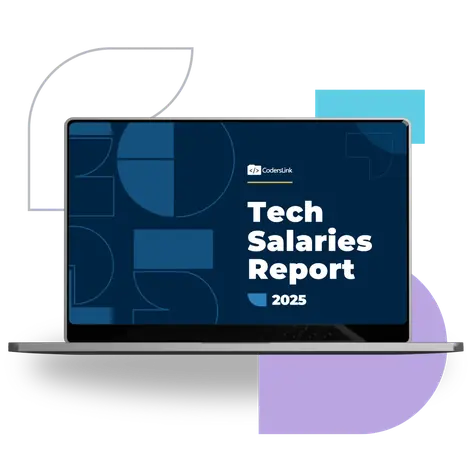
Onboarding is a process involved in every industry. Its presence in the world of tech is essential and having the right software developer onboarding processes in place is also vital.
The onboarding of new employees is basically the process of integrating them into your business ecosystem. It involves integrating your new hires into your company culture and gets them up to speed on the tools you use and the protocols you follow.
How your business performs its onboarding process will be key in terms of staff engagement and future retention. The process should last anywhere from three months to a year, with a year being the ideal timeframe, as this is the most critical time of a new employee’s journey within your company.
Things to think about for a proper engineering onboarding process
In order to design an effective onboarding process, you need to think about various aspects of the process itself.
- Onboarding duration – how long will it last?
- The key takeaways you want new employees to get from it
- Work protocols and KPI’s you need to share
- Access and training on tools and software used.
- How and when you’ll get feedback on the process for continuous improvement.
- How will you measure the success of the onboarding program
As we noted, the success of your software engineer onboarding process will be reflected in how well you retain employees and your levels of employee engagement. So, knowing exactly what these two things are will allow you to design the right onboarding process for your business.
Employee engagement
You want your employees to feel comfortable where they work. But beyond comfort, you also want them to feel important and involved. This is a measure of how engaged they feel within your business.
How happy your employees are – and indeed how comfortable they feel – is very important. However, real engagement comes from a sense of belonging. This involves aspects such as communication and collaboration, along with the general wellbeing of your staff.
Employee engagement can be measured as simply as a quarterly survey about their experience on a scale of ‘Excellent – Terrible’, or it can be more thorough with detailed questions about their experience with their manager, their team, their role.
Your level of employee engagement will therefore be heavily reliant on your onboarding process. If you want your employees to feel a sense of belonging, you need to try and instill that within them from the start. We’ll talk more about how to do that shortly, but now we need to define employee retention.
Employee retention
As the name suggests, employee retention is a measure of how well you keep existing employees and for how long. This correlates strongly with employee engagement. The more engaged your employees feel within your business, the higher the chances are that they’ll want to stay put.
In order to retain your employees, you need to create and maintain the right environment. This means ensuring they are happy where they are like we mentioned previously, and also that they have everything they need.
Your employees need to feel supported within your business. They also need to have a sense of pride, as this will ensure they want to continue working for a company they identify with on a personal level. Retaining employees will keep recruitment costs down, in terms of both money and time.
The average retention rate for a software engineer in the US is 14 months, this means that almost every year developers are either switching jobs or being hired at a new company. This has huge implications, as it can directly affect budget, timelines, and roadmaps. Focusing on improving this rate can mean a lot for your company.
While some turnover of your software engineers is usually healthy, rapid turnover is a sign there’s a problem. New employees will be able to bring a new perspective to the table. But if you’re losing software engineers fast, it’s a sign you need to evolve your employee retention strategy. The first aspect of your business you should look to transform is your software engineer onboarding process.
How to improve your developer’s onboarding process

It’s clear that the developer’s onboarding process plays a key role in their future engagement and retention rates. So, how do you get the most out of your onboarding process to boost both of these factors in the long and short term?
1. Integrate new employees within your business’ culture
In order to boost engagement, you need to make your employees feel at home within your business. This means they need to know what they have around them. From the very beginning, you should show them what it means to be part of your business, and what your culture is like.
This involves introducing them to key staff and giving them a feel for the way your business operates on a personal level. Let them know how your staff approach and deal with problems. Fill them in on the way everyone interacts with each other. This will allow them to better understand how things work outside of the software development itself.
2. Give them the proper training
However, they do still need to know how the software side of things works too. This means giving them access to proper training programs. Time spent on training is time saved on retraining. If you can educate them on the right ways to do things from the beginning, you’ll save a lot of time trying to teach them as they go.
Not only will this save you time, but it will also make them feel more comfortable. If they’re properly told the right way to do things, it gives them a baseline from which to improve. Giving your new employees the proper training will make them more confident in your team, boosting engagement.
3. Treat them like software developers
This last one is key but often forgotten about. You need to remember who you’re hiring. Software engineers are problem solvers. This means they thrive in an environment that allows them to flex their problem-solving ability.
While training is key, don’t spend countless hours training them to do basic programming tasks. Only teach them the essentials and give them breathing space to learn on their own too. Providing an environment that promotes self-learning and personal development from the get-go will improve your engagement.
If you simply talk to your staff and treat them like the software engineers that they are, you’ll boost your retention as well. This is because they’ll feel valued for what they can bring to the table. If you treat them like someone that matters to the business, they’ll feel like they do and are more likely to stay.
Boost your engagement and retention
Overall, to boost employee engagement and retention, you need to foster an environment that boosts positivity and gives employees a sense of belonging. With the right training, and proper feedback systems in place, you can boost the engagement and retention of your software developers.
Software Engineering Management Handbook
At CodersLink, we’ve helped more than 90+ partners hire top-rated engineers to build remote teams. From our partnerships, we’ve seen firsthand the specific tactics and strategies used by rapidly scaling companies to onboard and manage engineers successfully. We put it all together in our Software Engineering Management Handbook – these are tactics that lead to 10X productivity, longer retention, and engagement.
Photos by Dylan Gillis and Priscilla Du Preez on Unsplash


